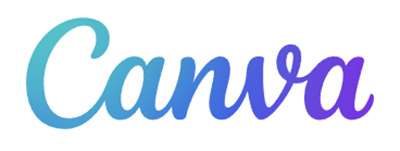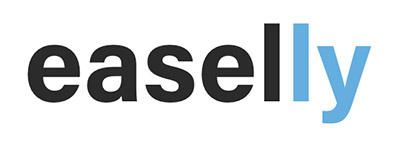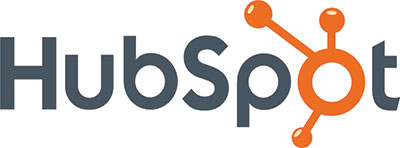Word of mouth will always be a major aspect of any awards and personalization professional’s marketing toolkit, but if the last year has taught us anything, it’s that getting online is no longer negotiable. Retailers who do not communicate with consumers via social media are missing a huge opportunity to build relationships with new customer groups, capture additional sales, and grow brand recognition. But with everything running a shop requires, adding to it all the Tweets, posts, ads, and more can feel like a full-time job—on top of all the other full-time jobs required to run your business! That’s where social media management tools come in.
SOCIAL Software
TOOLS TO MAKE MANAGING YOUR SOCIAL MEDIA EASIER AND MORE EFFICIENT
By Danielle Leber
(Originally published in the November/December 2021 issue of Insights)
Word of mouth will always be a major aspect of any awards and personalization professional’s marketing toolkit, but if the last year has taught us anything, it’s that getting online is no longer negotiable. Retailers who do not communicate with consumers via social media are missing a huge opportunity to build relationships with new customer groups, capture additional sales, and grow brand recognition. But with everything running a shop requires, adding to it all the Tweets, posts, ads, and more can feel like a full-time job—on top of all the other full-time jobs required to run your business! That’s where social media management tools come in.
With simple-to-use software, you can streamline your social media work and create an even better experience for your friends and followers online. Here, we cover just a few of the tools that can help you manage your social media more effectively—and more efficiently.
TOOLS FOR: SCHEDULING AND MANAGING POSTS
Consistency is key in social media marketing, so having a tool that enables you to draft and schedule posts in advance not only helps ensure your communications are cohesive, but also makes it easier to create a whole calendar of options prescheduled to post regularly (without losing time to Twitter or Facebook every day).

Hootsuite offers a lot of options in a small package. Not only can you schedule posts for Facebook, LinkedIn, Instagram, Pinterest, YouTube, Twitter, and more, but this user-friendly platform also enables users to track performance analytics for each social account (in addition to other useful capabilities). In addition, Hootsuite offers post approval and workload management options, making it a good choice for larger teams that require multiple users to manage and review social accounts. However, Hootsuite does come with a price: although a single user can get a plan for $49/month, multi-user team accounts start at $129/month and business plans hosting up to five users cost up to $599/month.

Sprout Social is considered one of the industry-standard tools for social media management, offering a variety of tools—including social scheduling, analytics tracking, data reports, and more—for Facebook, Twitter, LinkedIn, Instagram, Pinterest, YouTube, and more. Those with a substantial social media presence may consider Sprout because of the sheer number of channels it can host per user: up to 5 for a standard account and up to 10 for a professional or advanced account. However, Sprout also is one of the more expensive options, costing up to $99/month for a standard account, up to $169/month for a professional account, and up to $279/month for an advanced account.

Buffer offers fewer options for social media platforms and tools than other social media scheduling apps, but it makes up for it with an incredibly low price! A free version offering scheduling for Instagram, Facebook, Twitter, LinkedIn, and Pinterest is available, and Essentials and Team plans offering additional analytics tracking and other tools are available start at $5/month and $10/month respectively.
TOOLS FOR: CREATING CAPTIVATING CONTENT
Posts with photos, graphics, and videos see significantly greater engagement than text-only ones, so it’s important to incorporate these visually stunning options into your feed. Luckily, awards and personalization professionals are known to be excellent designers—so if you already have the creative skillset, all you need is an app, like one of the options below, to help you get your ideas onto the web.

If you’re short on time—or simply don’t want to worry about managing your brand identity from post to post—Tailwind Create is a great option. This tool automatically generates posts that are optimized for Instagram and Pinterest using your preset brand preferences (including color and font options specific to your style), a host of templates, and your own photos. Tailwind also offers several price points—from a free option up to a $39.99/month “Max” plan—which means you can incorporate it with other apps to cover all of the social media platforms not covered under this product.

Canva is considered one of the best social media design tools on the market, and for good reason—hosting hundreds of thousands of templates, this product makes it easy to drag and drop your photos (or one of the 75 million+ photos available via the platform) into useable social posts or thumbnails for Instagram, Facebook, YouTube, and more. Canva also offers options for presentations, videos, print products, and other collateral to complement your marketing strategy. This product offers a free option as well as a pro plan for $119.99/year for up to five users.

If you’re looking for an easy way to make interesting infographics (without spending hours at your computer), easelly is the solution for you. This product offers a huge library of templates, icons, illustrations, and charts to customize your graphics—and you don’t even need to set up an account to get started. However, if you’re serious about sharing data-heavy content, you may want to look into one of easelly’s paid options, priced at $4/month for individual users and $5/month for enterprise accounts.
TOOLS FOR: TRACKING YOUR SUCCESS
As important as interesting posts and striking visual content are, they don’t mean a thing if your audience isn’t engaging with them. But how do you know how successful your social media strategy is? Many of the tools discussed in the scheduling section offer this capability but using another one of these excellent options also can help!

HubSpot offers an all-in-one marketing tool that enables you not only to see your social media success in extensive and easy-to-ready graphs, but also gives you insights into your customers’ entire journey with your brand. Segregated into “hubs,” this platform offers Marketing Hub™ (including a CMS sub-option with website themes, SEO recommendations, and social media specific analytics) and other options for operations, sales, service, and marketing automation that you can mix and match. Plans start at $45/month for the individual Marketing Hub™ and go up to $800/month to $3,200/month for the professional and enterprise options.

BuzzSumo may not be designed specifically for social media, but it serves as a powerful tool for marketers across a variety of platforms. In addition to providing you data about how your content compares to others’ based on relevant industry keywords, BuzzSumo offers detailed enough analytics to help you identify many different variables affecting the success of your strategy, including post length, publish date, and headline type. This tool also is among the most price-efficient, offering a free version that gives users up to 10 free searches a month and 1 year of data as well as additional plan options ranging from up to $99/month to up to $299/month.

Platform-Specific Analytics Tracking Although many analytics tools bring all of your social media statistics into one place, you also can track the success of your posts directly on Twitter, Facebook, LinkedIn, Instagram, and more. Twitter offers Twitter Analytics, Facebook offers in-depth data via the Insights tab of Facebook pages, and Instagram also uses the Facebook Insights platform to track the success of posts. If you already are using Google Analytics to track your website, you also can access data on the channels from which customers are accessing your site (or use social media–specific URLs with analytics tracking) to get some basic information about which platforms are driving the most traffic to your store.